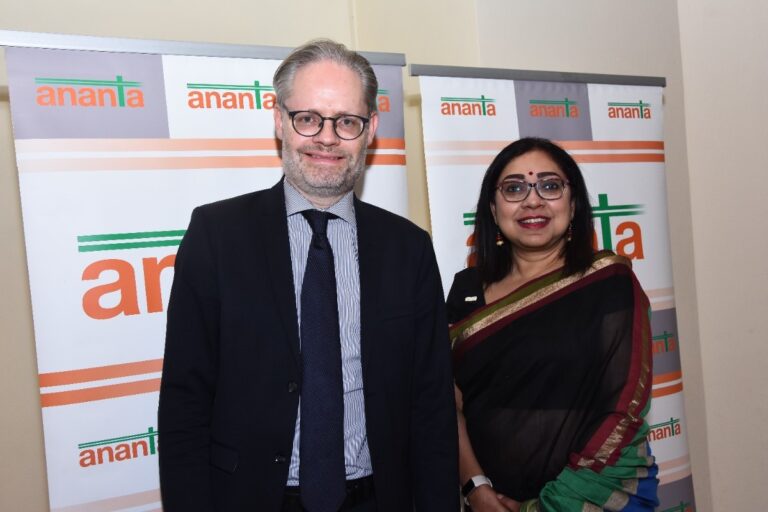The contents of this essay are based on conversations during the 7th India-US Forum
China’s international behavior is often subject to scrutiny. Its internal workings continue to be shrouded in mystery. This essay will discuss China's internal dynamics, trade policies, risk-management strategies, its stance on Taiwan, and the activities of the People's Liberation Army (PLA).
Internal Dynamics
Despite significant investments in internal security and surveillance, there are indications of potential weaknesses in China’s centralized power structure. The Chinese miscalculation of the COVID-19 policy in 2022 and the failure to gauge public sentiment is a pertinent example. Similarly, the dismissal of the entire leadership of the People’s Liberation Army Rocket Force in 2023 is noteworthy, particularly following a decade-long anti-corruption campaign.
In the backdrop of various economic challenges, there is a growing sense of disillusionment, even among those who have been historically optimistic and loyal to the government. Repression and information control are increasingly noticeable. Therefore, the process of greater centralization is an attempt to avoid disruption. It reflects the challenges associated with the adjustment process and underscores the party's significant fear of losing control over the system.
The path to de-risking
It is noteworthy that China was ahead of the rest of the world in seeking to de-risk its economy. The focus on indigenous innovation, capability building, and holding a large share of the global supply chain are representations. Their efforts to de-risk the global payments system are also notable. Trading with Russia in Yuan, the Belt and Road Initiative, Union Pay, WeChat, and Huawei’s 5G technology are all examples of de-risking in various sectors.
However, China’s failure to de-risk its reliance on demand from the rest of the world is particularly significant.
Evidence suggests that China’s ability to be competitive in manufacturing or its trade surplus have nothing to do with efficiency or comparative advantage. It is directly linked to large indirect subsidies and weak domestic demand.
The real estate sector in China is a proxy for what is happening at a larger scale in the country. Easy access to cheap capital acts as a subsidy. Net savers subsidize net borrowers wherein the net savers are the household sector, and the net borrowers are manufacturers and local governments. The undervalued currency also acts as a subsidy, wherein the net importers (the household sector) are subsidizing the net exporters. The expansion in tradable-goods exports is a response to the property sector contraction.
In this equation, households do not have enough income to consume a significant portion of what they produce. The problems of the real estate sector will be evident in the infrastructure and other manufacturing sectors.
These large subsidies will also lead to a much larger manufacturing share of GDP in China than in the rest of the world. Globally, manufacturing is 16 percent of GDP; in China, it is 28 percent. China’s share of global GDP is 17-18 percent; however, it is only 13 percent of global consumption and 31 percent of global manufacturing. The world has to adjust to this huge domestic imbalance within China.
There is an unambiguous shift in Chinese ambition to push for high-end manufacturing through subsidies, in spite of weak external demand. This shift is visible in the renewable energy sector as well as auto-exports. Such opportunities will eventually be available in the aviation sector, wherein constraints on Boeing’s ability to manufacture create a potential to be compensated by Comac C919.
The United States, along with other persistent deficit countries like England, must adopt policies that reject the absorption of excess savings from surplus countries like China. It falls upon these countries to drive a transformation in global imbalances. Bilateral tariffs are not necessarily an adequate de-risking strategy. Alternative sources of supply and production are critical.
Within this context, some of India's key export sectors, such as pharmaceuticals, auto components, and electronics, rely on Chinese intermediate or capital goods. Completely cutting off these supply chains would be counterproductive. Instead, a gradual and sustainable approach to deleveraging is necessary. The Indian government is attempting this through various schemes with varying degrees of success. However, a rapid reduction in the $80 billion trade imbalance to just $1 billion within a few years is not a realistic expectation. It will require significant sacrifices in key export sectors.
De-risking should not be automatically equated with positive outcomes. High tariffs, higher costs, reduced competitiveness, and a lack of innovation are trade-offs that have to be balanced in this bid.
China is well aware of its dependence on foreign technology, and the fact that those dependencies can be used against it. The US sanctions on Huawei confirms its pre-existing policy of seeking an indigenous semiconductor sector.
It is puzzling why China is enthusiastic about attracting foreign capital. It can be suggested that it is more about appearances than practical necessity. China views international capital markets as a symbol of being taken seriously. China's demand for foreign investment in leading-edge sectors is also dedicated to strengthening the country’s domestic champions. Its need for foreign capital is minimal. For a developing country, foreign capital is useful for overcoming savings constraints, fulfilling high investment needs, and introducing new technology and management techniques. However, China is not a capital- or savings-constrained economy.
The current negative foreign direct investment (FDI) flows suggest foreign companies are withdrawing money from China. This might not necessarily mean they are selling their domestic factories but rather taking advantage of higher interest rates elsewhere. In the past, there was a financial benefit to keeping corporate cash in China due to higher RMB interest rates compared to dollar rates. The shift in cash out of China could also signal a lack of confidence among foreign investors, potentially influencing domestic-investor confidence as well.
Military advances
China’s economic progress is accompanied by advances in its military might. The People’s Liberation Army (PLA) has undergone the most comprehensive military modernization in the history of mankind. A combination of ballistic, cruise, and hypersonic technology, their rocket force is far more sophisticated than any other adversary. The lack of such sophisticated missile defenses in India is a cause of concern for both India and the United States.
The Chinese strategic support force was the first in the world to proactively integrate space, cyber, and electronic warfare. It is their primary instrument for AI enablement. When Chinese officials discussed "intelligentization" five to six years ago, they were already considering the incorporation of AI.
Currently, there is only an assessment of the size of the Chinese military force and not their performance since they are yet to be tested on the battlefield. Without an accurate assessment of performance, there is a problem of uncertainty. In the event of conflict escalation, the Chinese, their allies, and their adversaries will all be taking uncalculated risks. This increases the need for restoring deterrence.
There is an emotional aspect to the Chinese leadership’s claims on Taiwan. The issue at hand extends beyond a mere question of sovereignty. It also encompasses China's aspiration to assert itself as a global focal point by the year 2047, juxtaposed with the complexities it encounters in governing specific islands.
The most peaceful and pragmatic solution for Taiwan may paradoxically lie in non-resolution. Attempts to resolve the Taiwan matter are accompanied by greater risks. This necessitates the formulation of a policy that maintains an unsatisfactory status quo for all parties involved—China, Taiwan, and the United States.
























